| |
Click on the maps for larger image |
| |
|
| Regional Surface Meteorological Networks |
| |
|
| Union Pacific Railroad Weather Station Network - The Union Pacific Railroad
operates this network of 264 weather stations (1 in Wisconsin) located in the central and western United
States. Further information on Union Pacific is available on their
home page. This network is included as part of the University of Utah
MesoWest and NOAA/Earth
System Research Laboratory (ESRL) Global Systems Division (GSD)
MADIS data sets. |
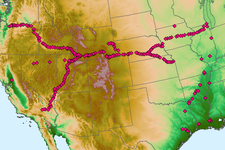 . . |
| WMTV WeatherNet
- WMTV-TV in Madison, Wisconsin operates this network of 39 stations located
primarily at schools throughout southern Wisconsin (38 in Wisconsin). The
network provides up to 1-minute observations of air temperature, relative
humidity, wind speed, wind direction, precipitation, and barometric pressure.
For further information visit the
WMTV
network page. |
 |
| |
|
| KSTP WeatherNet
- KSTP-TV in St. Paul, Minnesota operates this network of 62 stations located
primarily at schools throughout Minnesota and western Wisconsin
(10 in Wisconsin). The
network provides up to 1-minute observations of air temperature, relative
humidity, wind speed, wind direction, precipitation, and barometric pressure.
For further information visit the
KSTP
network page. |
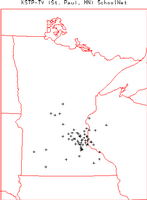 |
| |
|
| KWWL WeatherNet - KWWL-TV in Cedar Falls, Iowa
operates this network of 44 stations with locations primarily in northeastern Iowa and
(2 in Wisconsin). The network provides up to
1-minute observations of air temperature, relative humidity, barometric pressure,
wind speed, wind direction, wind gust, and precipitation. For further information visit the
KWWL network
page. |
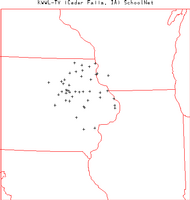 |
| |
|
| KDLH WeatherNet
- KDLH-TV in Duluth, Minnesota operates this network of 15 stations located
primarily at schools throughout northeastern Minnesota and northwestern Wisconsin
(6 in Wisconsin). The
network provides up to 1-minute observations of air temperature, relative
humidity, wind speed, wind direction, precipitation, and barometric pressure.
For further information visit the
KDLH
network page. |
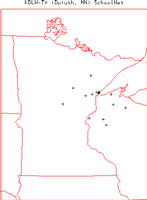 |
| |
|
| WMAQ WeatherNet
- WMAQ-TV in Chicago, Illinois operates this network of 113 stations located
primarily at schools throughout northern Illinois (1 in Wisconsin). The
network provides up to 1-minute observations of air temperature, relative
humidity, wind speed, wind direction, precipitation, and barometric pressure.
For further information visit the
WMAQ
network page. |
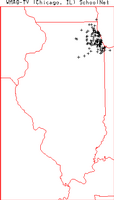 |
| |
|
| State and Local Surface Meteorological Networks |
| |
|
| Wisconsin Department of Transportation (DOT)
Road Weather Information System (RWIS) - The Wisconsin DOT operates this
network of 62 stations with locations along roadways throughout Wisconsin.
The network provides variable (hourly or higher) resolution observations of air
temperature, dew point, relative humidity, and wind speed. For further information
visit the
WIDOT
RWIS page. This network is included as part of the University of Utah
MesoWest and NOAA/Earth
System Research Laboratory (ESRL) Global Systems Division (GSD)
MADIS data sets. |
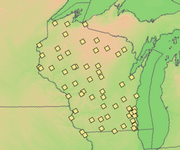 |
| |
|
| Wisconsin Automated Weather Observation Network (AWON)
- The University of Wisconsin Cooperative Extension operates this network of 2
stations with locations in central Wisconsin. The network provides hourly observations
of precipitation, solar radiation, air temperature, relative humidity, soil temperature
(2, 4, and 20 in depths), wind speed, wind direction, wind gust, and PAR. For further
information visit the
AWON home page. |
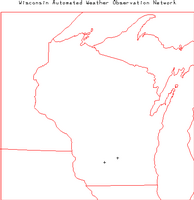 |
| |
|
| Wisconsin Air Monitoring Network - The Wisconsin
Department of Natural Resources Air Management Program operates this network of 16
stations with locations throughout the state. The parameters vary by station with all
providing wind speed and wind direction. Some stations also provide air temperature,
barometric pressure, solar radiation, and relative humidity. For further information
visit the Air
Management Program home page. |
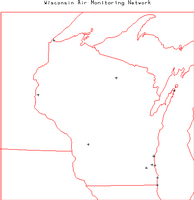 |
| |
|
| WITI WeatherNet
- WITI-TV in Milwaukee, Wisconsin operates this network of 63 stations located
primarily at schools throughout eastern Wisconsin. The
network provides up to 1-minute observations of air temperature, relative
humidity, wind speed, wind direction, precipitation, and barometric pressure.
For further information visit the
WITI
network page. |
 |
| |
|
| WSAW WeatherNet
- WSAW-TV in Wausaw, Wisconsin operates this network of 16 stations located
primarily at schools throughout northern Wisconsin. The
network provides up to 1-minute observations of air temperature, relative
humidity, wind speed, wind direction, precipitation, and barometric pressure.
For further information visit the
WSAW
network page. |
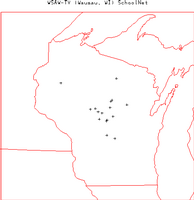 |
| |
|
| WBAY WeatherNet
- WBAY-TV in Green Bay, Wisconsin operates this network of 10 stations located
primarily at schools throughout northeastern Wisconsin. The
network provides up to 1-minute observations of air temperature, relative
humidity, wind speed, wind direction, precipitation, and barometric pressure.
For further information visit the
WBAY
network page. |
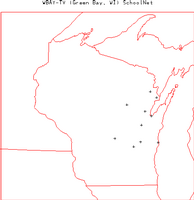 |
| |
|
| Precipitation and Radar Networks |
| |
|
| NOAA/National Centers for Environmental
Prediction (NCEP) Hourly Precipitation Data - NOAA/NCEP routinely develops
a National Multi-sensor Hourly Precipitation Analysis (Stage II) data set from
hourly radar precipitation estimates and from hourly gage reports. The gage data
includes hourly observations from ~4000 gages across the US (43 in Wisconsin)
collected by the NOAA River Forecast Centers and sent to NCEP. Further information
on these data is available at:
http://wwwt.emc.ncep.noaa.gov/mmb/ylin/pcpanl/. |
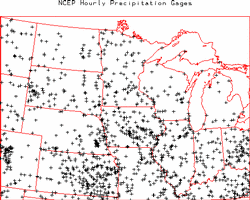 |
| |
|
| NOAA/NWS Cooperative Observer 15-minute Precipitation Network - The NOAA/NWS
routinely collects 15-minute observations of precipitation from Fisher-Porter and Universal
rain gages operated by 2777 cooperative observers located throughout the US (58 in Wisconsin).
These data are archived at NOAA/NCDC as data set TD 3260. For further information visit the
NOAA/NCDC TD3260 page at:
http://ols.nndc.noaa.gov/plolstore/plsql/olstore.prodspecific?prodnum=C00505-TAP-A0001 |
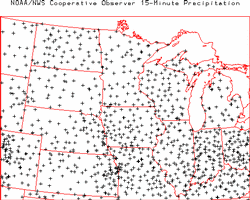 |
| |
|
| Weather Surveillance Radar 1988 Doppler (WSR-88D)
Network - The NOAA/NWS and the Department of Defense operate this network
of 143 WSR-88D radars across the contiguous US (3 in Wisconsin). The Level II
data are the three meteorological base data quantities (reflectivity, mean radial
velocity, and spectrum width) and are recorded at all NWS and most DOD sites.
Level II data are then processed in order to create a number of meteorological analysis
products known as Level III data. Level III data are recorded at the NWS sites. The
Level III products included base reflectivity, base spectrum width, base velocity,
composite reflectivity, echo tops, velocity azimuth display (VAD) wind profile,
vertically integrated liquid (VIL), 1-hour precipitation, storm total precipitation,
hail index overlay, mesocyclone overlay, severe weather probability overlay, storm
structure, storm tracking information overlay, and tornadic vortex signature overlay.
All Level II and III data are archived at NOAA/NCDC. For further information visit
the NOAA/NCDC Radar Resources page at:
http://www.ncdc.noaa.gov/oa/radar/radarresources.html or the NOAA Radar
Operations Center at:
http://www.roc.noaa.gov/. |
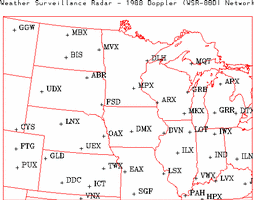 |
| |
|
| Radiation and Flux Networks |
| |
|
| Integrated Surface Irradiance Study (ISIS)
Network - The ISIS network is operated by the NOAA Air Resources
Laboratory (ARL) Surface Radiation Research Branch (SRRB). The network
provides 3 minute observations of downwelling global solar, direct solar,
downwelling diffuse solar and global UVB. There are 9 ISIS sites located
across the US (1 in Wisconsin). For further information visit the ISIS
home page at:
http://www.srrb.noaa.gov/isis/. |
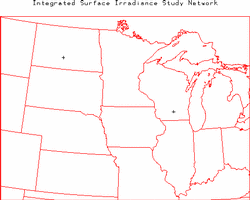 |
| |
|
| United States Department of Agriculture (USDA)
UV-B Monitoring Network - The USDA operates this network of 29 stations
with locations throughout the US (1 in Wisconsin). The network provides
3-minute observations of spectral total/direct/diffuse radiation, air temperature,
relative humidity, solar radiation, barometric pressure, and photosynthetically
active radiation. For further information visit the
USDA UV-B Monitoring page. |
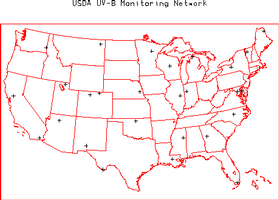 |
| |
|
| Ameriflux Network - The Ameriflux network consists of 54 sites conducting
long-term measurements of CO2, water and energy fluxes throughout the US (3 in Wisconsin).
The typical observational frequency is 30 minutes. The parameters measured at each site
vary, but Ameriflux has defined a core set of parameters that most sites collect, including
fluxes of CO2, energy and water, basic meteorological and radiation parameters, and soil
temperature and moisture. For further information visit the Ameriflux home page at:
http://public.ornl.gov/ameriflux/Participants/Sites/Map/index.cfm. |
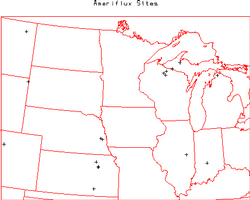 |
| |
|
| Chequamegon Ecosystem Atmosphere Study (ChEAS) - The ChEAS program is a multi-organizational
reserarch program in a northern mixed forest in northcentral Wisconsin. There are four eddy covariance flux
towers and four micrometeorological stations at the site. For further information visit the
ChEAS home page. |
Map at web site. |
| |
|
| Soil Networks |
| |
|
| Soil Climate Analysis Network (SCAN) - The SCAN is operated by the United
States Department of Agriculture (USDA) Natural Resources Conservation Service (NRCS). The
network provides hourly observations of air temperature, relative humidity, wind speed,
wind direction, solar radiation, precipitation, barometric pressure, snow water content,
snow depth, soil temperature (at 2, 4, 8, 20, and 40 cm depths), and soil moisture (at 2, 4,
8, 20 and 40 cm depths). The 80 SCAN stations are located across the US in primarily
agricultural regions (1 in Wisconsin). For further information visit the
SCAN home page. |
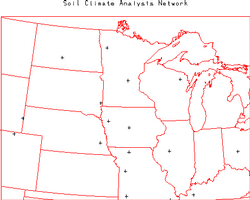 |
| |
|
| North Central River Forecast Center (NCRFC) Soil Temperature Network -
The NCRFC operates this network of 47 stations (8 in Wisconsin) that collect weekly
readings of soil temperature at depths of 2, 4, 8, 20, 40 and 60 in at locations throughout
the north central US. For further information visit the
NCRFC Soil
Temperature Network web page. |
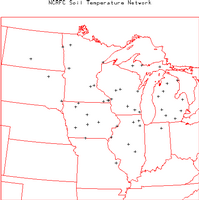 |
| |
|
| Hydrology Networks |
| |
|
| United States Geological Survey (USGS) Streamflow
Network - The USGS (part of the US Department of the Interior) operates this
network of 7237 streamflow gages (172 in Wisconsin) at locations throughout the US.
The network provides hourly or more frequent observations of stage (water level) from
which discharge (flow) is computed using a stage-discharge rating relation. The
rating is defined by occasional direct current-meter measurements of discharge. All
data are available through the USGS and the district offices in each state. Many of
these gages provide realtime data
relayed via the GOES satellite data collection system. The realtime data are
provisional data that have not been reviewed or edited. These realtime data
may be subject to significant change and are not citeable until reviewed and approved
by the USGS. Realtime data may be changed after review because the stage-discharge
relationship may have been affected by: 1) backwater from ice or debris; 2) algal and
aquatic growth in the stream; 3) sediment movement; and 4) malfunction of recording
equipment. Each station record is considered provisional until the data are
published. The data are usually published with 6 months of the end of the water year
(1 October to 30 September). Data users are cautioned to consider carefully the
provisional nature of the information before using it. For further information on the
USGS streamflow network visit the
USGS Water Resources of the United States page or the
USGS Wisconsin District Office
home page. |
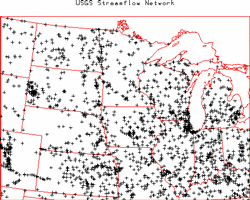 |
| |
|
| Upper Air Networks |
| |
|
| NOAA/NWS Radiosonde Network Low Vertical Resolution Data - The NOAA/NWS
typically releases radiosondes twice per day at 0000 and 1200 UTC at 69 locations throughout
the US (1 in Wisconsin). During special weather situations the NWS can request to release
additional radiosondes at off-times (e.g. 1800 UTC). The low resolution data is sent out
over the Global Telecommunications System (GTS) and provides mandatory and significant level
observations of pressure, altitude, temperature, dew point, wind speed, and wind direction.
There are 3 types of radiosondes utilized within the US network, Vaisala, VIZ (or Sippican),
and Microsonde. These data are archived by NOAA/NCDC and other organizations. For further
information on the NWS Radiosonde network visit the
NWS Upper-air Observations Program
home page. A several year archive of GTS upper air data is available at the
NOAA/FSL Radiosonde Database. |
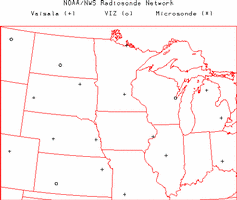 |
| |
|
| NOAA/NWS Radiosonde Network High Vertical Resolution Data - The same
radiosonde locations mentioned in the previous data set also provide a 6-second vertical
resolution data set that provides observations of pressure, temperature, altitude,
relative humidity, and azimuth and elevation angles. UCAR/JOSS has developed software
to derive 6-second vertical resolution winds from the angle data. These data are
archived by NCDC and UCAR/JOSS. |
 |
| |
|
| NOAA Profiler Network (NPN) - The
NOAA/Forecast Systems Laboratory (FSL) operates this network of 32 404 MHz wind
profilers primarily across the central portion of the United States (1 in Wisconsin).
Each site provides 6-minute and hourly vertical profiles of wind speed and wind
direction. Additionally, 11 of the NPN sites have a collocated Radio Acoustic
Sounding System (RASS) that provides 6-minute and hourly vertical profiles of
virtual temperature (none in Wisconsin). For further information visit the
NPN home page.
An archive of the hourly wind profiles is available from
NCAR/SCD. |
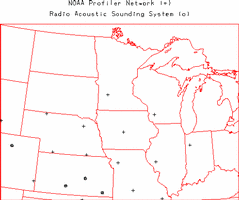 |
| |
|
| Ground Based Global Positioning System (GPS) Meteorology Demonstration Network
(GPS-MET) - The NOAA/FSL ingests data from 323 GPS locations around the US
operated by many different agencies (5 in Wisconsin). Typically each location provides
30-minute observations of integrated precipitatable water along with a number of surface
meteorology parameters (air temperature, relative humidity, barometric pressure, etc).
For further information visit the
GPS-MET home page. |
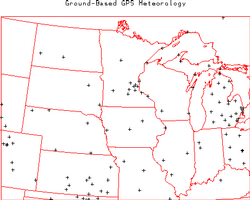 |
| |
|
| Aerosol Networks |
| |
|
| Regional East Atmospheric Lidar Mesonet - The Regional East Atmospheric Lidar Mesonet
(REALM) is a proposal by a number of lidar researchers and is designed to monitor air quality in the
vertical from multiple locations on the east coast. For further information visit the
REALM web site. |
Map at web site. |
| |
|
| Coastal Networks |
| |
|
| Coastal-Marine Automated Network (C-MAN) -
The National Data Buoy Center (NDBC) operates this network of 55 C-MAN stations
with locations along coastlines throughout the US (2 in Wisconsin). The network
typically provides hourly observations of air temperature, barometric pressure,
wind speed, wind direction, and wind gust. Some stations also provide
observations of sea water temperature, water level, waves, relative humidity,
precipitation, and visibility. For further information visit the
NDBC home page. |
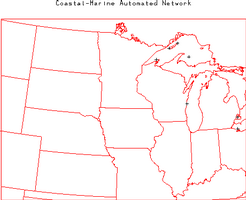 |
| |
|
| National Data Buoy Center (NDBC) Moored Buoy
Network - The NDBC operates this network of 77 moored buoys with locations
throughout the US coastal regions (1 off the coast of Wisconsin). The network typically
provides hourly observations of air temperature, dew point, water temperature,
barometric pressure, wind speed, wind direction, wave height, wave period, and
swell. For further information visit the
NDBC home page. |
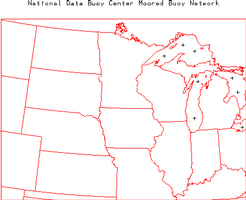 |
 .
.

























 .
.
























